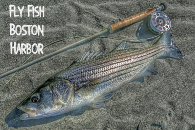
Almost a year ago I started writing this blog (in Serbian language). The first entry was about the fly I named the
Country Gentleman, which could be modified/trimmed on the location to represent an impressionistic imitation of various aquatic insects. Today's entry is about the current incarnation of the same fly, which served me well during the past year. This version is in the mayfly form, and it works as a reasonable imitation of
Trico mayflies and various olives, abundant on the spring creeks of the Upper Midwest
Driftless area.
Sometimes the silhouette is more important than the exact color of the artificial. The dark body of the fly enhances the overall silhouette of the imitation. Instead of the original brown Hungarian partridge feather, I am currently using the snipe wing covert feather for the front hackle. It enables me to tie the fly in small sizes much more easily. I also started shaping the wing in the Comparadun style, for the low-riding, flush floating imitation of the freshly hatched dun. The delicate, sparse profile enhances the overall vulnerability of the newborn insect.
The recipe:
Hook: Dry Fly 16 or smaller;
Tails: Microfibetts;
Body & Wing: Badger saddle, palmered and trimmed to shape;
Front hackle: Single turn of snipe wing covert feather (medium dun).

This winter has been quite extreme in Minnesota. I found
Lapsang Souchong, the legendary and robust tea from the
Fujian province of China, a perfect companion to my fly tying sessions. I have recently switched from
Twinings filter bags to the
Tea Source loose leaf tea (my neighbourhood tea shop.) The difference is quite noticeable, with more fragrant, smoky and less bitter brew. It will be a perfect companion for my early season fishing trips.



